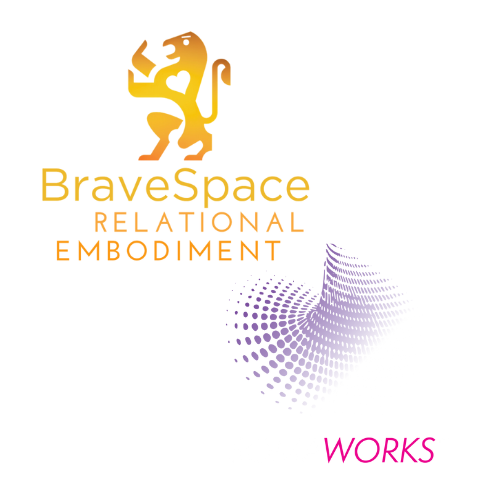The somatic dynamics of a hug
One of my favorite experiences to lead in BraveSpace® is conscious hugging. Hugs are a microcosm for so many aspects of relationship. They’re also exquisitely physical as a purely embodied form of communication. Here’s how I break hugs down, strongly influenced by my study as a Laban Movement Analyst:
Reaching, Pulling, Yielding, and Pushing in a Phrase
These are fundamental actions in our interaction with the world. They come from developmental movement patterning; studying how babies learn to move. I like to include all four in a conscious hug. That said, not every hug of our lives will have all of these elements:
First we reach for each other. Reaching comes from activating the intent to connect with something outside of ourselves somewhere in space. It is directional; typically we reach directly for what we want to connect with. In a hug we generally reach with both arms to and then around the other person.
Then we pull the other person into the embrace. Pulling involves active use of effort, whether strong or light. Some parts may need to be held back. In order to feel safe hugging some people will retract a bit through the hips. I honor that fully—it’s the condition within which someone feels safe enough to be vulnerable with me.
The next step is to yield. This is the most vulnerable in my experience. We soften together, receive, and listen with our bodies. This step is missing from many hugs. It is not for me to impose this on anyone, but I can enter the state of yielding and notice how the other person’s body responds. This is not going limp or falling into them—I can maintain my stature in relationship to the ground and stand fully on my feet while also softening in relation to the other person.
The last step is to push away. I value this step in maintaining boundaries. We are whole in ourselves and co-creative. The push puts a period on the sentence. This relates to the phrasing of the hug. Phrasing is how we relate with the flow of time. Everything we do has a beginning, a middle, and an end. Every interaction has phrasing, and we create it together. The hug is over when either person is done. I find that we’re mostly very good at feeling for this, but sometimes feelings of guilt or submission gets in the way of claiming the end of the phrase. I may feel I owe it to someone to stay longer in a hug than feels true for my body. Sometimes they may not let go. There’s a lot we navigate here. The push is the way out. By practicing ending hugs with a gentle (or sometimes a less-than-gentle) push I find myself more clear about my boundaries. Sometimes I also push away when I feel the other person unclear in their phrasing, and that they could be waiting for me to signal the end of our hug.
For me a good hug is sensitive, clear, and present, without an agenda. We dance together in a hug, sometimes coming from very different places in regard to the level of comfort and experience we have with bodies and touch. Yet, hugs are ubiquitous, and someone may hug intimately with very little conscious knowledge about how they’re doing it. Our bodies’ knowledge is of a different kind than the mind. Here I write intelligently about hugging, and I honestly believe the mind can be used in this way to educate the body. I am also so grateful for all the unconscious hugs I give and experience. The body knows what to do. The mind is most useful when something in the body doesn’t feel right and we need more information to find out why or expand our possibilities.
The next BraveSpace® level 1 retreat in Boise will be Feb 25th-27th. It’s an expansion of possibilities in play, touch, and healing. The early bird special runs through January 30th. Please take a look!
